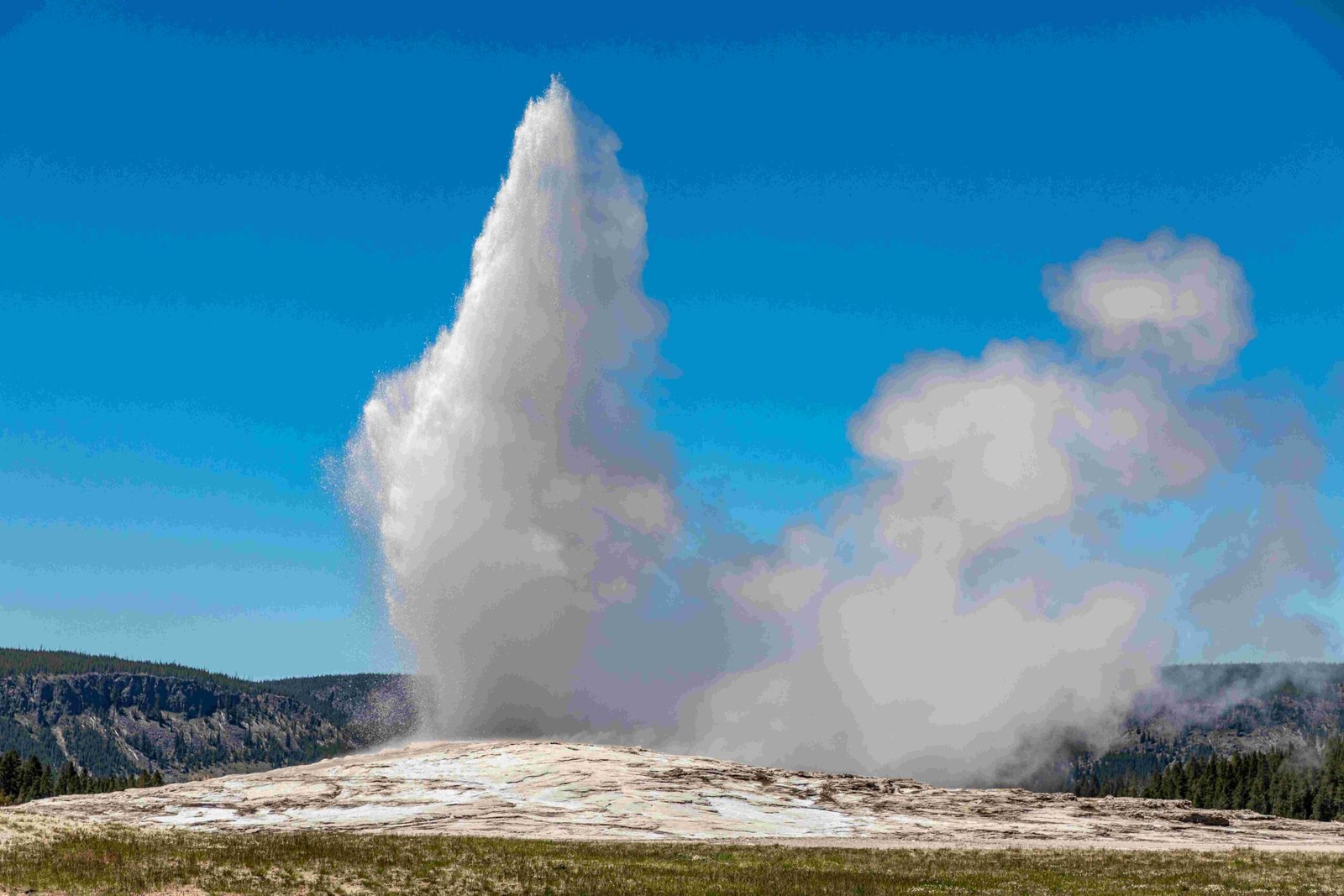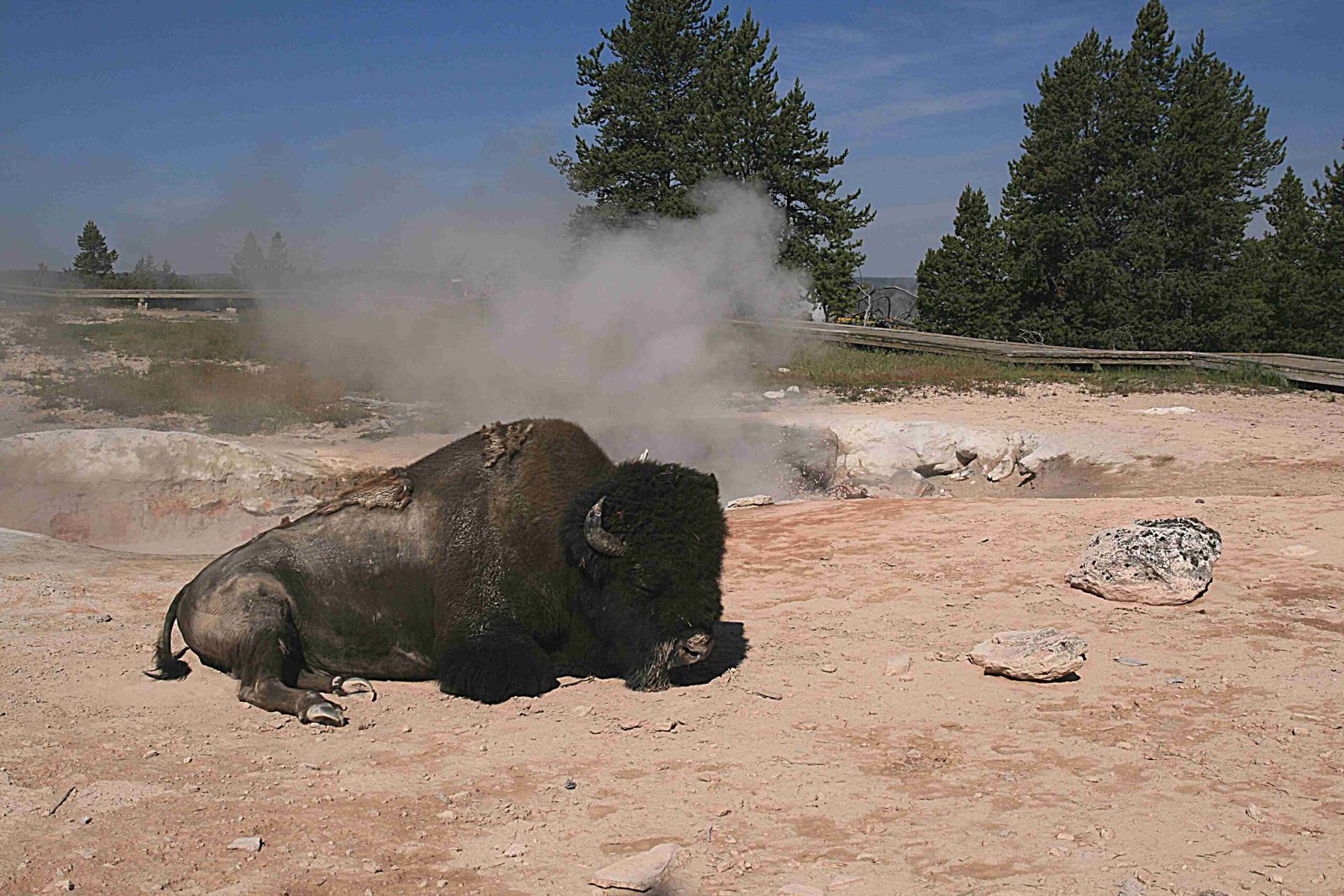Scientists maintain a vigilant watch over Yellowstone National Park due to its supervolcano potential. While the probability of a catastrophic eruption is low, ongoing seismic activity and the park’s volcanic history keep researchers alert. Continuous monitoring through advanced technology allows scientists to track changes and assess risks, balancing public safety concerns with the park’s geological significance.
What Is the Current Level of Concern Among Scientists?

Scientists’ concern about Yellowstone National Park is measured and based on extensive research:
- Historical data shows three major caldera-forming eruptions in the past 2.1 million years
- The most recent significant eruption occurred approximately 631,000 years ago
- A smaller eruption took place around 70,000 years ago
- Current statistical probability of a caldera-forming eruption is estimated at 0.00014%
Despite these low odds, scientists remain vigilant due to the potential impact of such an event. The Yellowstone Volcano Observatory (YVO) reports that the magma chamber beneath Yellowstone contains only about 5-15% molten lava, which may not be sufficient for a major eruption.
How Do Scientists Monitor Yellowstone’s Volcanic Activity?

Monitoring Yellowstone’s volcanic activity is a comprehensive process involving various methods:
- Seismic Networks: The YVO, in collaboration with the University of Utah and the National Park Service, operates a sophisticated seismic monitoring system.
- Continuous Data Collection: Seismometers record geologic data 24/7, with monthly reports on activity in the area.
- Hydrothermal Event Tracking: Scientists monitor events like the recent explosion at Black Diamond Pool in July 2024.
- Ground Deformation Measurements: GPS and satellite data help track changes in the earth’s surface.
This multi-faceted approach allows scientists to detect any significant changes that might indicate increased volcanic activity.
What Can Visitors Learn About Yellowstone’s Volcanic Potential?
Visitors to Yellowstone National Park have several opportunities to learn about its volcanic potential:
- Educational Centers: The Old Faithful Visitor Education Center and Grant Village Visitor Center offer exhibits on Yellowstone’s geology and volcanic history.
- Guided Tours: The National Park Service and YVO provide tours explaining the park’s geological features and volcanic risks.
- Interpretive Programs: Regular programs offer insights into the park’s volcanic nature and ongoing monitoring efforts.
While visitors cannot access monitoring equipment directly, these educational resources provide valuable information about Yellowstone’s unique geological characteristics.
What Challenges Do Scientists Face in Assessing Yellowstone’s Eruption Risk?
Assessing the risk of a Yellowstone eruption presents several challenges for scientists:
- Funding Constraints:
- Long-term monitoring requires significant financial resources
-
Securing consistent funding for research can be difficult
-
Technological Limitations:
- Current technology, while advanced, cannot predict eruptions with absolute certainty
-
Interpreting complex volcanic systems remains challenging
-
Public Perception Management:
- Balancing accurate information with avoiding unnecessary panic
-
Educating the public about real vs. perceived risks
-
Data Interpretation:
- Analyzing vast amounts of data from various monitoring systems
- Distinguishing between normal fluctuations and potential warning signs
These challenges require scientists to continually refine their methods and communication strategies to effectively assess and convey Yellowstone’s volcanic risk.
How Does Yellowstone’s Volcanic Activity Compare to Other Volcanoes?
Yellowstone’s volcanic activity is unique when compared to other volcanoes:
| Aspect | Yellowstone | Typical Stratovolcano |
|---|---|---|
| Type | Supervolcano | Conical volcano |
| Eruption Frequency | Rare (millions of years) | More frequent (decades to centuries) |
| Potential Impact | Global | Regional |
| Monitoring Difficulty | High (vast area) | Moderate |
| Visible Signs | Less obvious (geysers, hot springs) | More obvious (cone shape, smoke) |
This comparison highlights why Yellowstone requires specialized monitoring and why scientists maintain a cautious approach despite the low probability of a major eruption.
What Would Be the Potential Impact of a Yellowstone Eruption?
While the probability is low, the potential impact of a Yellowstone eruption would be significant:
- Ash Distribution: Could cover much of North America
- Climate Effects: Potential global cooling due to ash and gases in the atmosphere
- Ecosystem Disruption: Massive changes to local and regional ecosystems
- Economic Impact: Disruption of agriculture, transportation, and infrastructure across a wide area
However, it’s crucial to note that such a catastrophic eruption is extremely unlikely in the foreseeable future, based on current scientific understanding.
How Can the Public Stay Informed About Yellowstone’s Volcanic Status?
The public can stay informed about Yellowstone’s volcanic status through several channels:
- Official Websites:
- USGS Yellowstone Volcano Observatory
-
National Park Service Yellowstone page
-
Social Media:
-
Follow official accounts of YVO and Yellowstone National Park
-
Visitor Centers:
-
When visiting, check information at park visitor centers
-
Scientific Publications:
-
Read peer-reviewed articles for in-depth information
-
Educational Programs:
- Participate in park ranger-led programs or online webinars
By utilizing these resources, the public can access accurate, up-to-date information about Yellowstone’s volcanic activity and any potential risks.
References:
1. New Yellowstone eruption data changes understanding of volcanic hazards
2. Yellowstone – Global Volcanism Program
3. Risk Factors Associated with Volcanoes

